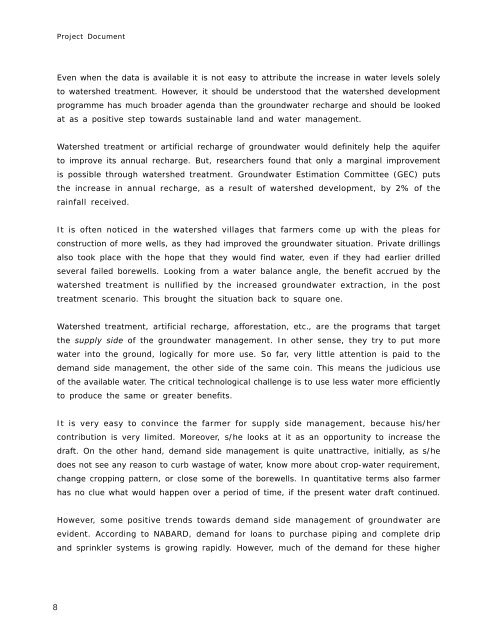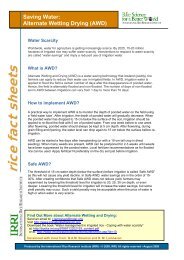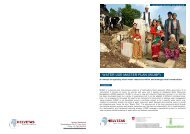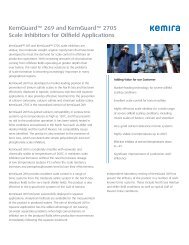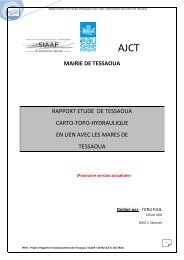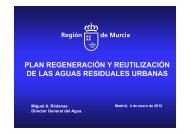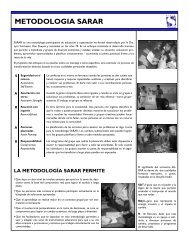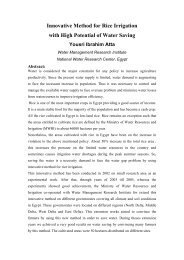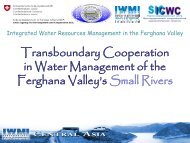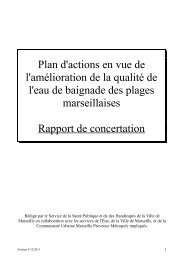FAO Project Document book - Solutions for Water platform - World ...
FAO Project Document book - Solutions for Water platform - World ...
FAO Project Document book - Solutions for Water platform - World ...
Create successful ePaper yourself
Turn your PDF publications into a flip-book with our unique Google optimized e-Paper software.
<strong>Project</strong> <strong>Document</strong><br />
Even when the data is available it is not easy to attribute the increase in water levels solely<br />
to watershed treatment. However, it should be understood that the watershed development<br />
programme has much broader agenda than the groundwater recharge and should be looked<br />
at as a positive step towards sustainable land and water management.<br />
<strong>Water</strong>shed treatment or artificial recharge of groundwater would definitely help the aquifer<br />
to improve its annual recharge. But, researchers found that only a marginal improvement<br />
is possible through watershed treatment. Groundwater Estimation Committee (GEC) puts<br />
the increase in annual recharge, as a result of watershed development, by 2% of the<br />
rainfall received.<br />
It is often noticed in the watershed villages that farmers come up with the pleas <strong>for</strong><br />
construction of more wells, as they had improved the groundwater situation. Private drillings<br />
also took place with the hope that they would find water, even if they had earlier drilled<br />
several failed borewells. Looking from a water balance angle, the benefit accrued by the<br />
watershed treatment is nullified by the increased groundwater extraction, in the post<br />
treatment scenario. This brought the situation back to square one.<br />
<strong>Water</strong>shed treatment, artificial recharge, af<strong>for</strong>estation, etc., are the programs that target<br />
the supply side of the groundwater management. In other sense, they try to put more<br />
water into the ground, logically <strong>for</strong> more use. So far, very little attention is paid to the<br />
demand side management, the other side of the same coin. This means the judicious use<br />
of the available water. The critical technological challenge is to use less water more efficiently<br />
to produce the same or greater benefits.<br />
It is very easy to convince the farmer <strong>for</strong> supply side management, because his/her<br />
contribution is very limited. Moreover, s/he looks at it as an opportunity to increase the<br />
draft. On the other hand, demand side management is quite unattractive, initially, as s/he<br />
does not see any reason to curb wastage of water, know more about crop-water requirement,<br />
change cropping pattern, or close some of the borewells. In quantitative terms also farmer<br />
has no clue what would happen over a period of time, if the present water draft continued.<br />
However, some positive trends towards demand side management of groundwater are<br />
evident. According to NABARD, demand <strong>for</strong> loans to purchase piping and complete drip<br />
and sprinkler systems is growing rapidly. However, much of the demand <strong>for</strong> these higher<br />
8


